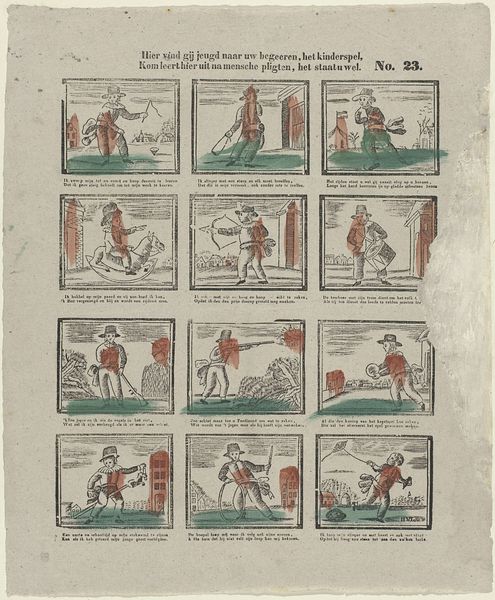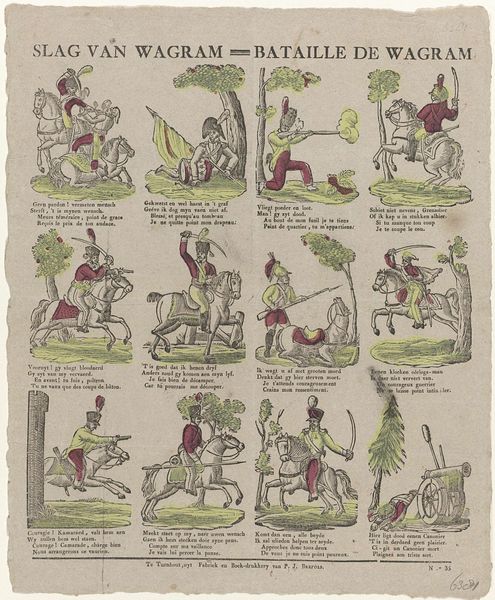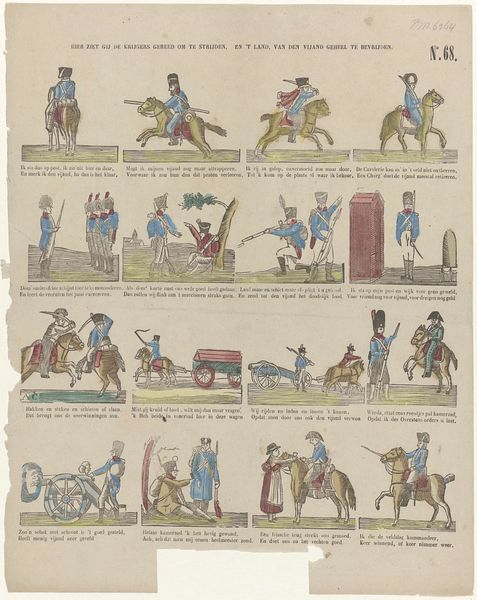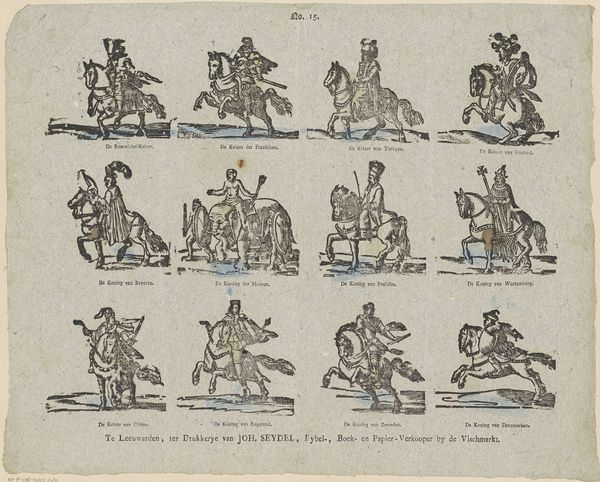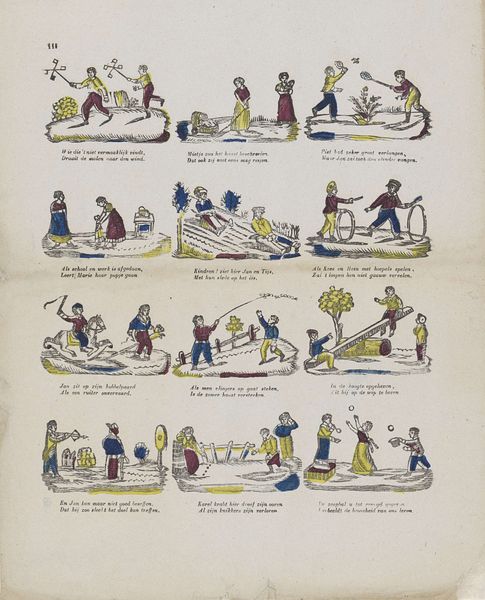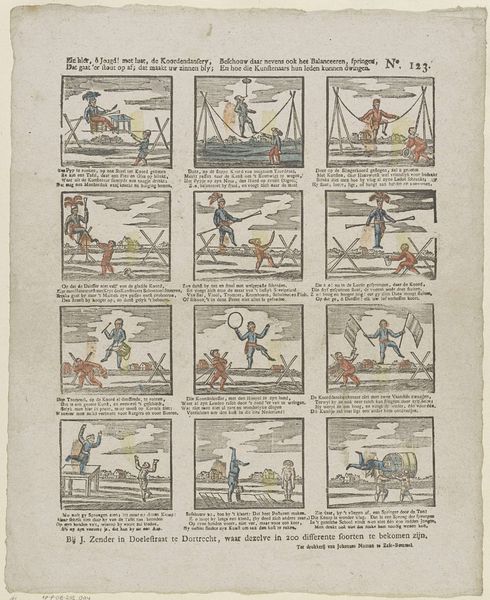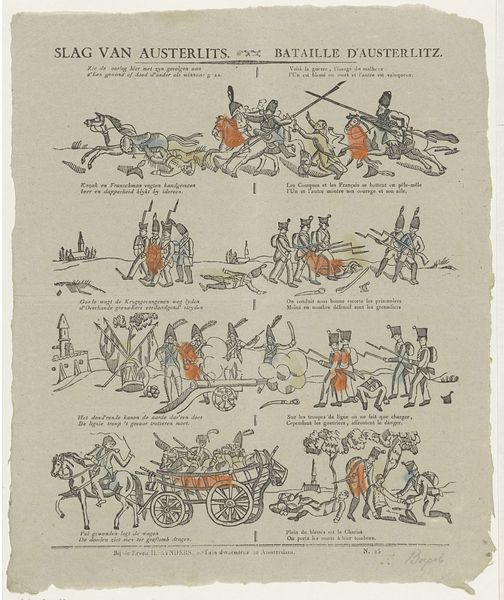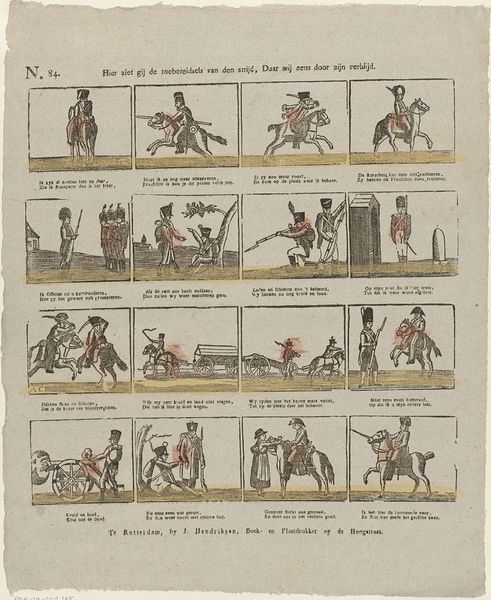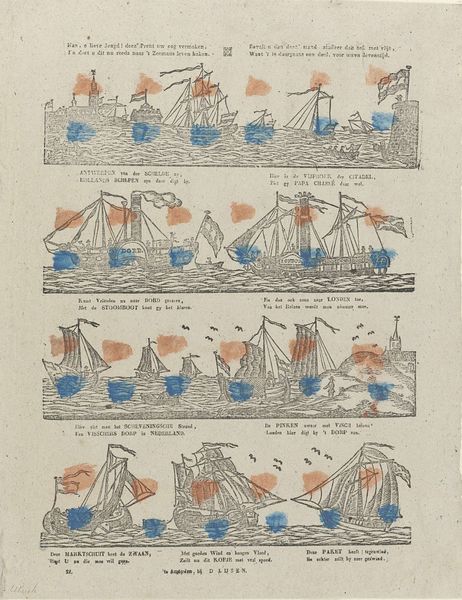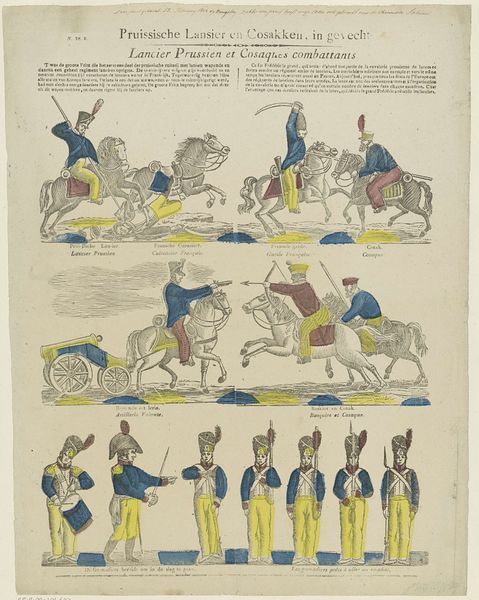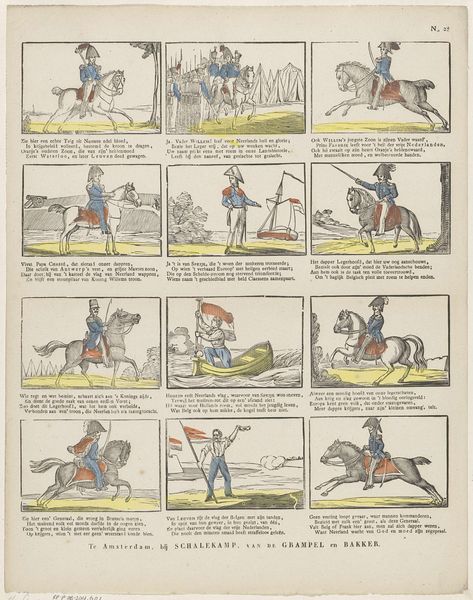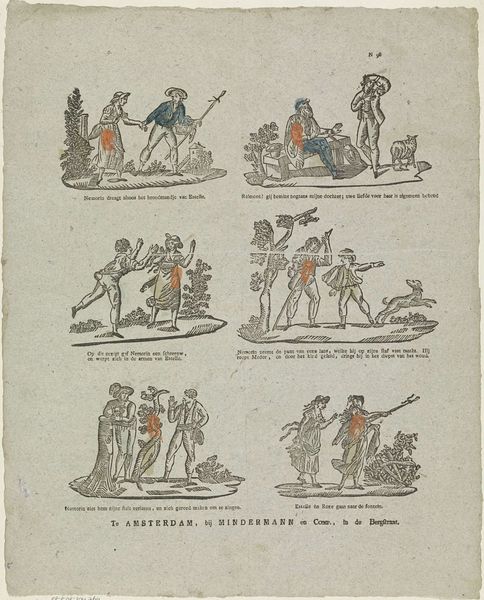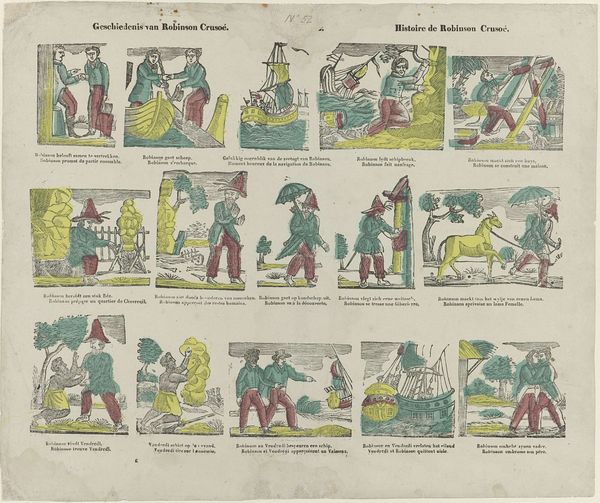
U kind'ren! die steeds gaarne leeren, / Wil men met deze prent vereeren, / Gij vind van alles hier verteld, / Onthoud en leest wat men u meld 1833 - 1856
0:00
0:00
print, ink, pen, engraving
#
narrative-art
#
dutch-golden-age
# print
#
ink
#
comic
#
pen
#
genre-painting
#
engraving
Dimensions: height 424 mm, width 339 mm
Copyright: Rijks Museum: Open Domain
Editor: This print, made between 1833 and 1856 by Glenisson & Van Genechten, is called "U kind'ren! die steeds gaarne leeren, / Wil men met deze prent vereeren, / Gij vind van alles hier verteld, / Onthoud en leest wat men u meld". It uses ink, pen and engraving. The composition feels very blocky with its grid format and limited color palette. What are your initial thoughts on how the elements relate to each other? Curator: Indeed, the structural arrangement dictates much of its visual language. Note how each vignette, confined within its rectangular space, operates as a discrete unit. Semiotically, the repetition of figures in various poses suggests a narrative sequence. Observe the economy of line and the deliberate placement of red accents. Where does your eye lead? Editor: I notice the red first. It seems to be used to highlight figures across each little panel. It almost creates a through line even though the panels seem distinct. What purpose do you think these stylistic and compositional choices served? Curator: Consider the interplay between text and image. The inscription, as integral to the piece, explicitly frames its function as didactic. The limited color palette reinforces a clarity of presentation, emphasizing line and form. Are we, perhaps, invited to interpret it as a pedagogical tool, simplifying complex narratives into digestible segments for children? Editor: That makes sense, given the Dutch Golden Age style. Now that you mention it, it definitely guides you in reading this as a form of instruction. Curator: Precisely. Reflecting on the composition, line, and the deliberate deployment of color, we can start to decode its underlying structure and meaning. Editor: Thanks, I see this print now with more intent. Analyzing the form provides a great way into understanding the artist's intent.
Comments
No comments
Be the first to comment and join the conversation on the ultimate creative platform.
